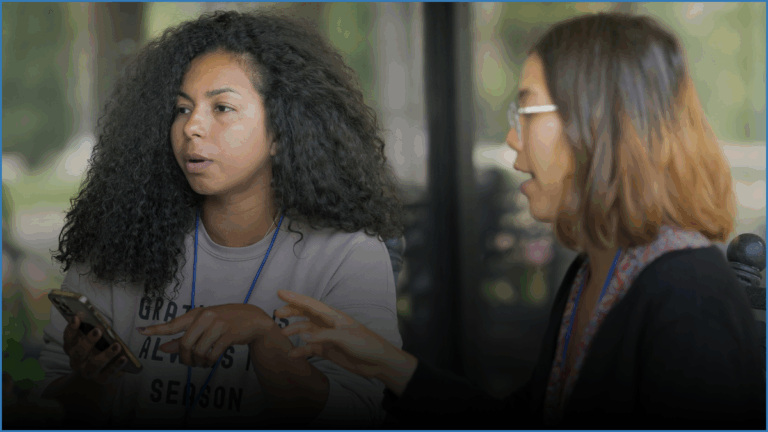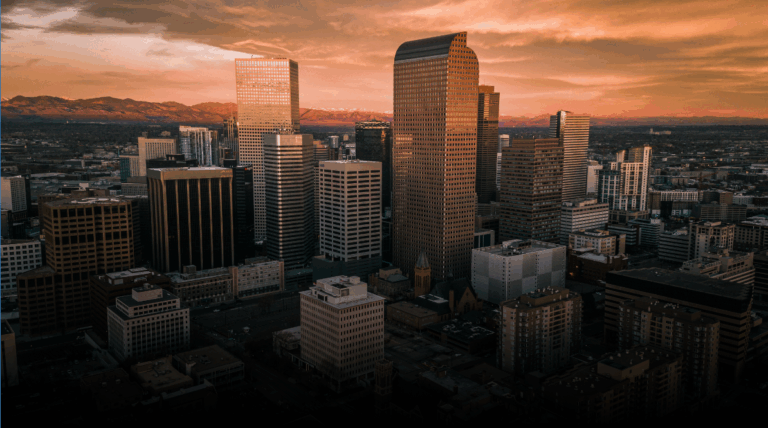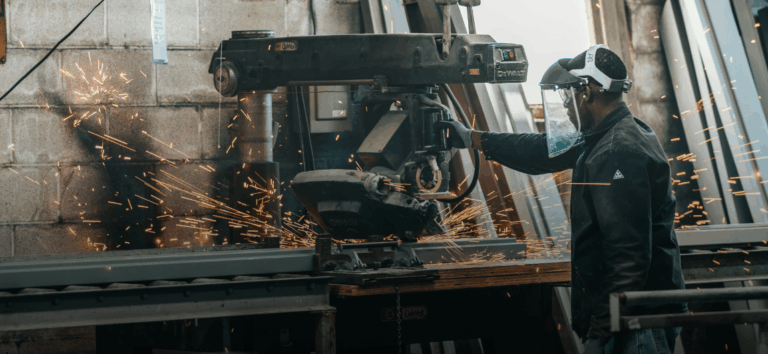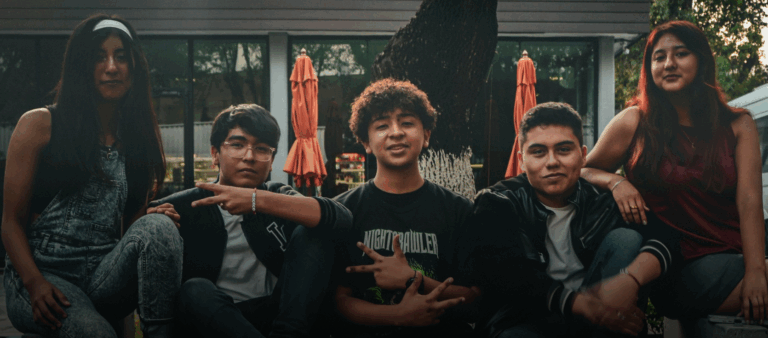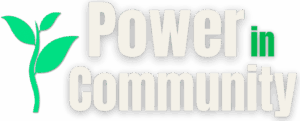
POWER IN COMMUNITY · NO. 4
What Makes a Community Whole?
How Coloradans are reshaping public spaces and reclaiming community power.
Look closely at any neighborhood, and you’ll the presence—or absence—of what makes daily life work.
A sidewalk that safely connects you to the bus.
A park that welcomes residents of all ages.
A main street where neighborhood businesses can thrive.
This is community infrastructure, or the physical and social spaces that make living with safety, dignity, and connection possible. But this infrastructure is missing in too many parts of our state. And that’s not a coincidence.
“The ability to walk freely and securely across sidewalks and parks and open space—that may seem insignificant to some, but not having these things dispirits people,” says Michael H. Smith, senior program officer at The Colorado Health Foundation (CHF). “They pick apart at you.”
These gaps are often the result of systemic disinvestment, poor public planning, and a lack of decision-making power in the hands of the people most affected. “Peel back any of these issues and you’ll find political and policy choices,” says Camila Lara, a program officer at CHF. “Too often, the folks most affected have been excluded from participating.”
But little by little, that’s starting to change. Across Colorado, residents and local organizations are working together to reclaim public spaces and have a say in what gets built and why. The following two stories offer a glimpse of what that looks like in practice—one led by a longtime community coalition, the other by residents building something new from the ground up.
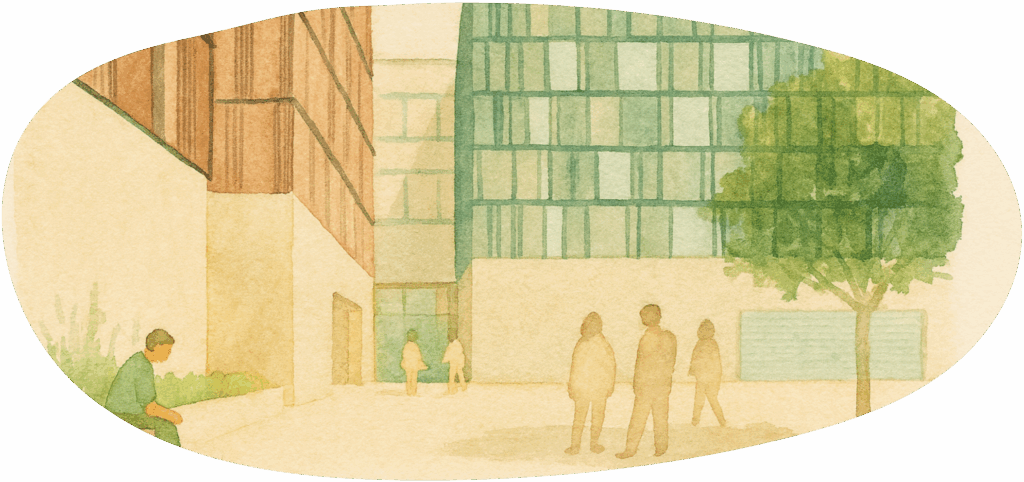
Building Community Power into Development
North Denver’s Globeville and Elyria-Swansea (GES) neighborhoods are no strangers to development that harms more than it helps.
The construction of I-70 in the 1960s sliced through homes and businesses, physically dividing the community. Smelters and meatpacking plants left behind polluted soil and water. Residents continue to live with the health impacts, including elevated asthma and other chronic conditions. More recently, projects like the Central 70 expansion and National Western Center revamp have generated pushback due to concerns about gentrification and displacement.
A Blueprint for Development Without Displacement
The GES Coalition and its affiliated land trust, Tierra Colectiva—a nonprofit that holds land in community ownership to ensure long-term affordability—led the charge for something different: development that supports stability, not displacement. Through public meetings and advocacy, residents pushed for a residential development that includes:
- 3- and 4-bedroom units to support multigenerational families
- Deep affordability to meet real neighborhood income levels
- Community-controlled space for local businesses and nonprofits
The vision became reality after years of grassroots organizing and new partnerships with CHF and Evergreen Real Estate Group. CHF made a transformative $6 million investment: $3.5 million as a construction loan, and $2.5 million as a grant to the land trust to own and control the commercial space. That means neighborhood businesses and nonprofits can operate in a space within the residential development that is not controlled by outside ownership, giving the community long-term control over who’s there, what it costs, and how that space serves local needs.
The five-story development at 4965 Washington Street will include 170 “deeply affordable” homes, which means they’re priced to be accessible for families earning considerably less than the area median income. It will also boast a new Denver Public Library branch and a café.
Why It Matters
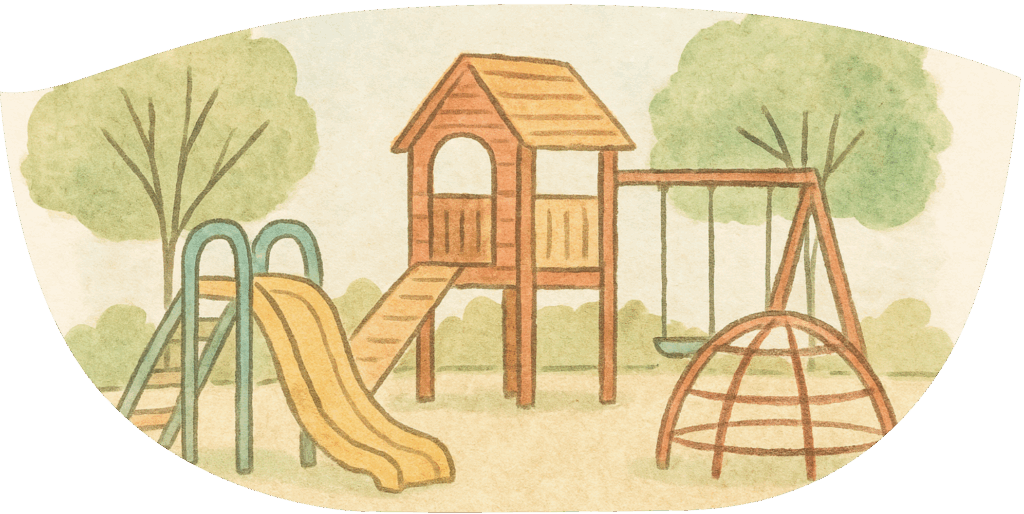
When Residents Lead the Design
Clifton, a community of about 20,000 on Colorado’s Western Slope, has seen what happens when public investment skips over a place.
As an unincorporated area, it often sits outside city planning efforts and public attention. The neighborhood’s only playground, located at Rocky Mountain Elementary, was outdated and unsafe, and families regularly had to leave their neighborhood to find a clean, working playground or a place to gather.
It was time for an upgrade, but too often, parks are built without real input from those who use them. Designs rely on one-size-fits-all plans, miss cultural context, or ignore what a community wants and needs. The result is a space that doesn’t fit or feel welcoming, especially in lower-income areas, rural towns, and communities of color already dealing with disinvestment.
Listening First, Then Building
With backing from The Colorado Trust, Clifton Community Leaders (CCL), a grassroots, resident-led group formed in 2018, launched a bilingual listening campaign in town to break that pattern.
Supported by local leaders like Jose Chavez, who had previously organized neighborhood cleanups, CCL went door-to-door. They surveyed more than 600 residents about what they wanted to see and experience in public spaces. They engaged with the youth directly on what they wanted to see and experience in a new playground.
Their top requests were clear:
- A safe, modern playground facility
- Inclusive, multigenerational features
- A space that welcomed everyone across age, ability, and language
CCL partnered directly with organizations whose missions were aligned with their own to bring the community’s broader vision to life. The Colorado Health Foundation provided a $750,000 grant for the project.
The transformed playground at Rocky Mountain Elementary Park opened in September 2023 with a bilingual ribbon-cutting and celebration. The adjacent community center, funded by a $1 million grant from The Colorado Trust, broke ground in September 2022 and opened in 2024, further expanding the site’s role as a neighborhood hub.
Why It Matters
Clifton shows what is possible when residents lead. This new park is a powerful model of shared ownership, community joy, and place-based pride.
By rewriting who holds decision-making power, Clifton residents changed the story of what’s possible in their neighborhood.
The town’s achievement also shows what happens when institutions like The Colorado Health Foundation (CHF) support grassroots power and advocacy. The foundation invests directly in communities through initiatives like CHF’s Equitable Community-Designed Outdoor Spaces. These efforts support residents in shaping outdoor spaces that reflect their identities, meet their needs, and strengthen the connection between place and health.
“One of the best entry ways into civic participation is through advocacy organizations who are doing the work,” says Dr. Leo Kattari, senior officer for public opinion insights at CHF. “They are knowledgeable in ways many of us are not as individuals. Let’s utilize that.”

One of the best entry ways into civic participation is through advocacy organizations who are doing the work. They are knowledgeable in ways many of us are not as individuals. Let's utilize that.
DR. LEO KATTARI,
SENIOR OFFICER FOR PUBLIC OPINION INSIGHTS,
THE COLORADO HEALTH FOUNDATION
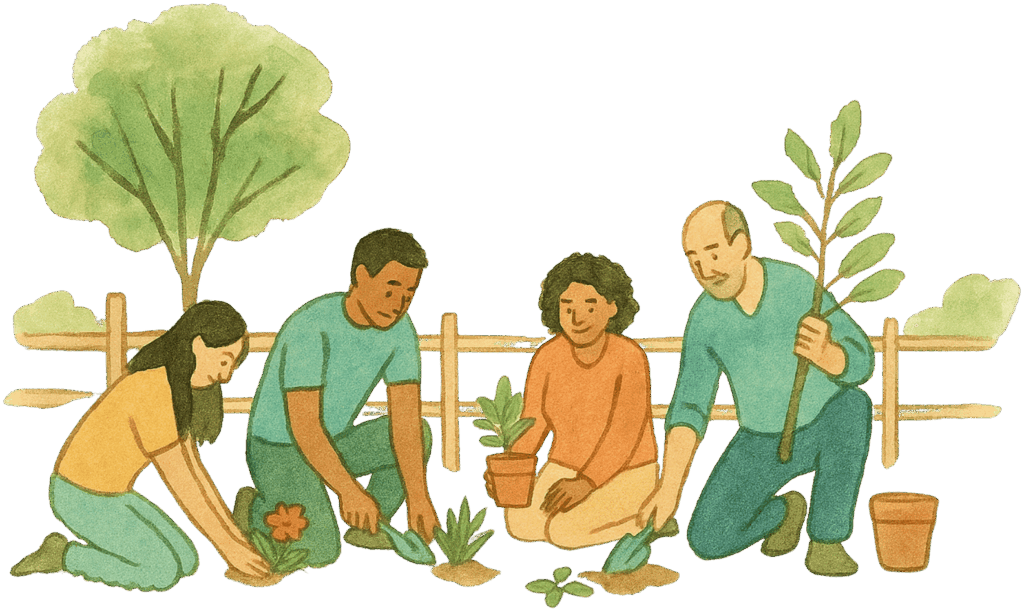
It’s Never Just a Playground
Community infrastructure is about power, not just amenities.
The gaps we see in parks, housing, and public spaces aren’t random. They reflect whose voices have historically shaped decisions, and whose have not.
We’ve seen it in Clifton and GES: communities stepping in where systems have stepped out, reclaiming the ability to shape their neighborhoods. Across Colorado, residents are reclaiming land, redesigning parks, and challenging who decides what gets built and where. “We should be at those tables and see ourselves as decision-makers,” says Dr. Kattari.
The more communities get involved, the more public spaces begin to reflect public will. These inch-by-inch wins are how power shifts to the grassroots.
What You Can Do
Reclaiming community space starts with noticing what’s missing and acting on what’s possible.
Here’s one way to start moving the needle:
- Start with a neighborhood walk: What public spaces are used? What’s underused or missing altogether? Are sidewalks cracked, bus shelters nonexistent, and parks uninviting? That’s your starting point.
- Map the decision-makers: Public libraries, parks, sidewalks, and zoning are shaped by specific agencies and boards, often with public input periods. Find out who controls what in your neighborhood, and when decisions are made.
- Bring real examples: Generic feedback gets generic results. Come with specifics: “Our playground doesn’t work for toddlers,” or “We need lighting along the route to the bus stop.” Show how small changes would make space safer, more welcoming, or more usable.
- Organize around a shared site: Choose one public space and ask neighbors what they wish it could be.
- Partner with groups who listen first: When an organization like a land trust or a parks nonprofit shows interest in your area, ask how you and your neighbors can help shape the plan. Here’s where prior organizing comes in handy.
Sounds like a lot? Start smaller. Listen to what people around you say they need. At the bus stop. In the school pickup line. On your block. Those everyday conversations are often where community power begins.
The Power in Community series is presented by The Colorado Health Foundation, working statewide to improve the health of Coloradans through community-informed investments and policy change. Learn more at coloradohealth.org.
Distributed by the Colorado Ethnic Media Exchange, a statewide network of newsrooms serving Colorado’s diverse communities and advancing equitable representation in media. Produced by Angle Content & Strategy, which builds mission-aligned content, tools, and partnerships that grow community agency.
About this article: All editorial decisions, reporting, and writing were carried out by human beings. Spanish-language versions were first translated using ChatGPT (OpenAI) and then reviewed and refined by a professional bilingual editor.
All inline illustrations were created using ChatGPT. The featured image was sourced from Unsplash. Image credit: Steve Adams




